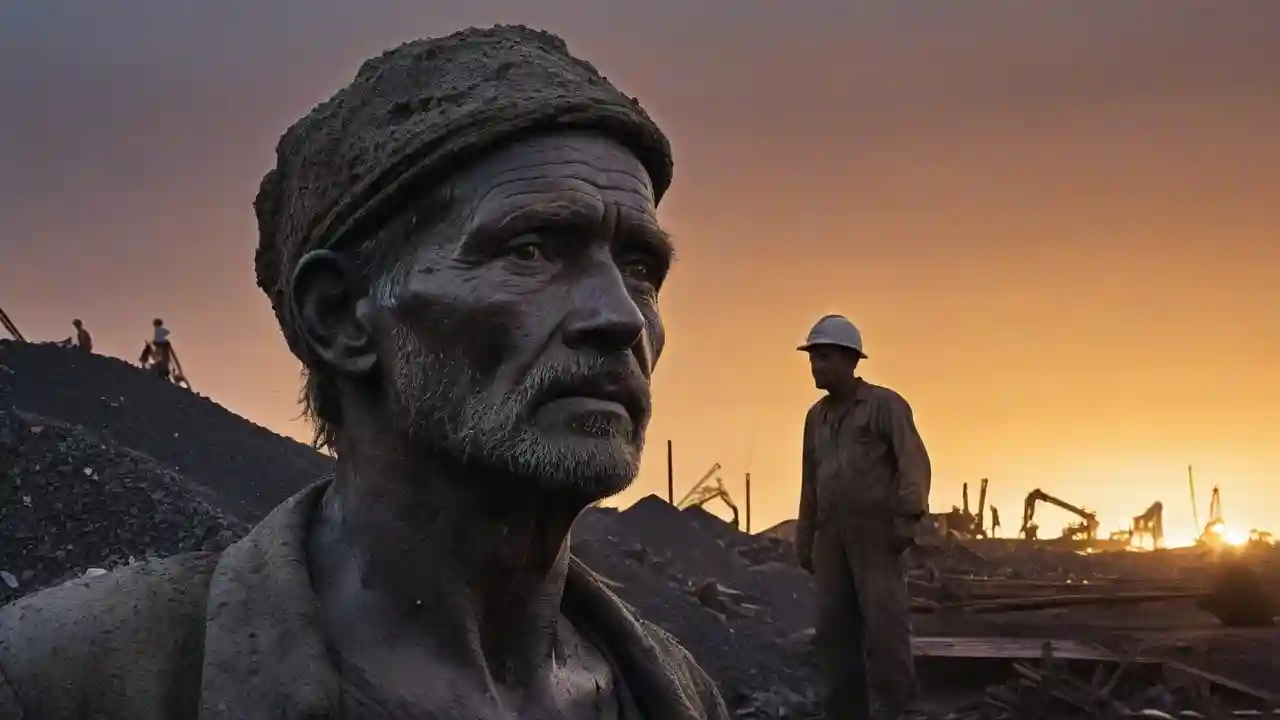
The Rare Earth War Just Changed—And Wall Street Is Missing the Point
The Rare Earth War Just Changed—And Wall Street Is Missing the Point
China isn't banning exports. It's banning the ability to compete.
Once again, the headlines led everyone astray. When China announced fresh rare earth export controls last time, investors reacted on autopilot: mining stocks jumped, tech names dipped, and market analysts dusted off the usual talking points about supply shocks and price spikes for elements most people can’t even pronounce.
But this time, Beijing flipped the script.
Instead of choking off the raw materials themselves—something it has technically done through licensing for years—China is aiming at something far more important: the tools, processes, and expertise needed to refine those materials into usable products.
This isn’t another commodity squeeze. It’s a strategic blockade of know-how.

The Consensus Is Focused on the Wrong Bottleneck
Here’s where the investment crowd keeps missing the mark: they’re racing to pour money into new rare earth mines in every country with a shovel. Australia has deposits. The U.S. has deposits. Canada, Greenland, Vietnam—you name it, there’s dirt full of lanthanides somewhere nearby.
But dirt isn’t the issue. It never was.
The real challenge lies in the messy, highly technical, and environmentally risky steps required to turn that dirt into ultra-pure individual elements. It’s the week-long solvent extraction sequences that can’t afford a hint of contamination. It’s the deep metallurgical skill needed to produce magnets with predictable performance. It’s the ability to run all of this at industrial scale without causing a toxic wasteland.
And now, Beijing is making sure no one else learns how.
The new controls block exports of separation equipment, refining technology, magnet-making processes, and even recycling systems. Even more quietly, they include “made-with-Chinese-process” language that ropes in foreign-made products. If a product contains even 0.1% rare earth material—or was made using Chinese techniques—it may require Beijing’s blessing.
That’s not just controlling the materials. That’s controlling the global means of production.
Why Mines Won’t Save You
Investors are chasing the wrong prize. Many rare earth mining projects brag about impressive ore grades and massive reserves. But digging it out of the ground isn’t what makes rare earths strategic.
Take the Bayan Obo mine in Inner Mongolia. Its value doesn’t come from the minerals in the soil—it comes from the separation complex next door that took decades to optimize.
China now holds roughly 90% of the world’s separation capacity. That figure hasn’t really budged, despite years of political noise about “supply chain diversification.” Why? Because building separation capacity hits the same three walls every time.
First, the environmental nightmare. Refining rare earths produces toxic and sometimes radioactive waste. Most Western countries won’t give permits for that kind of liability. China pushed ahead anyway, absorbing the pollution that others refused.
Second, the expertise gap. The people who understand how to run these processes at scale are almost all Chinese—and the new controls prevent them from working abroad without permission. Beijing just turned talent into a weapon.
Third, the long learning curve. Even with money, equipment, and permits, it can take years to iron out the bugs. Lynas, one of the only non-Chinese processors, spent more than a decade and close to a billion dollars just to reach consistent production—and still operates at a fraction of China’s scale.
The Real Chokepoint: Heavy Rare Earths and Magnets
If you’re going to worry about rare earths, at least panic about the right ones. Not all rare earths are created equal. The market lumps them together, but the real strategic pressure is in heavy rare earth elements—especially dysprosium and terbium—and the high-performance magnets built from them.
Light rare earths like cerium and lanthanum are relatively abundant and easier to separate. Heavy rare earths are scarce, stubborn to process, and indispensable in critical applications: F-35 flight controls, hard drive motors, electric vehicle powertrains, offshore wind turbines—the list goes on.
China controls roughly 95% of global heavy rare earth separation. The West has essentially zero capacity at scale. Building it isn’t as simple as ordering machinery; it requires process knowledge that China just put behind lock and key.
And magnets? That bottleneck is even tighter. Producing top-tier sintered neodymium-iron-boron magnets with dysprosium diffusion demands a series of specialized steps—hydrogen decrepitation, jet milling, magnetic alignment, high-precision sintering—performed in a perfectly tuned order. Chinese companies perfected these methods over decades. In the West, similar attempts are still stuck in the prototype stage, each facility costing hundreds of millions and taking years to build.
Where the Money Should Go (And Mostly Isn’t)
Venture capital loves to chase shiny trends. Lately, that means trying to replace coders and lawyers with AI. That might be entertaining, but it completely ignores one of the most urgent and financially promising challenges on the planet: fixing the rare earth midstream.
Not another mine. Not a 15-year vertical integration fantasy.
What’s needed is laser-focused solutions to specific technical chokepoints—heavy rare earth separation, magnet sintering, hydrogen decrepitation, solvent extraction automation—developed by teams with genuine domain expertise and a clear path to defense-grade certification.
And the timing couldn’t be better. The U.S. government is moving beyond subsidies and loans and starting to take direct equity stakes in critical materials projects. The Defense Production Act is being used. Permitting is speeding up for projects tied to national security. Yet investors still pour billions into software clones while strategic infrastructure sits unfunded.
Look at the economics: a company that cracks heavy rare earth separation with acceptable environmental standards could earn gross margins near 60% in a market where China has deliberately tightened supply. Defense contracts provide long-term revenue. Industrial policy reduces risk. Technical complexity builds a moat competitors can’t easily cross.
This is exactly the kind of hard-tech, high-impact opportunity venture capital was originally built to support.
The Gallium Distraction
Now let’s address the viral rumor about gallium prices—another rare material crucial for chips, radar, and 5G systems. Social media claimed China sells gallium domestically for under 10,000 yuan per ton, while U.S. buyers pay $800,000 per ton. Supposedly, there’s a thousandfold price gap just waiting to be exploited.
Except the math is wrong.
Those Chinese prices are listed per kilogram, not per ton. At around 1,780–1,820 yuan per kilogram (roughly $250), a metric ton of gallium would cost about $250,000. U.S. spot prices for high-purity gallium range from a few hundred to a few thousand dollars per kilogram depending on grade.
Why does this error matter? Because it shows how hype and misinformation distract from the real strategic issues. Yes, gallium prices have more than doubled since China tightened controls in 2023. Yes, Western buyers face supply pressure. But fake numbers fuel bad decisions, sending capital chasing imaginary arbitrages instead of real solutions.
What This Actually Means
China’s move to restrict rare earth technology exports is remarkably clever. It avoids the backlash of an outright ban. It doesn’t even hurt Chinese producers much. Instead, it creates a structural advantage: even if the West builds its own rare earth supply chain, it will take longer, cost more, and lag technologically—unless it can independently reinvent decades of Chinese process knowledge.
For advanced tech industries, this creates a permanent risk premium. Semiconductor foundries, disk drive manufacturers, EV makers, defense contractors—they’ll all face extra compliance paperwork, longer lead times, and more procurement headaches. There won’t be dramatic shortages. Just constant friction and shrinking margins.
For investors, the lesson is simple: stop chasing mines. Start building midstream capacity. The opportunity lies in separation technology, magnet manufacturing, recycling methods, and the specialized equipment that embeds the know-how China wants to keep for itself. Back non-Chinese experts. Focus on targeted solutions, not grand supply chain empires.
For policymakers, the message is even harsher: the window is already closing. The ideal time to build rare earth midstream capacity was a decade ago. The second-best time is right now. That means accepting some environmental trade-offs, cutting red tape, guaranteeing purchases, and even taking ownership stakes in strategic projects.
The Uncomfortable Truth
China didn’t ban rare earth exports. It did something smarter: it made sure that anyone trying to compete will need the very technology China refuses to share. It’s the geopolitical equivalent of yanking away the ladder after climbing to the top.
The real question isn’t whether the West can build its own rare earth industry. Given enough time and money, it can.
The question is whether it can do it fast enough—and at a cost that doesn’t make it irrelevant—before China’s lead becomes uncatchable.
Because the real bottleneck was never in the ground.
It’s in the factory. And China just locked the doors.